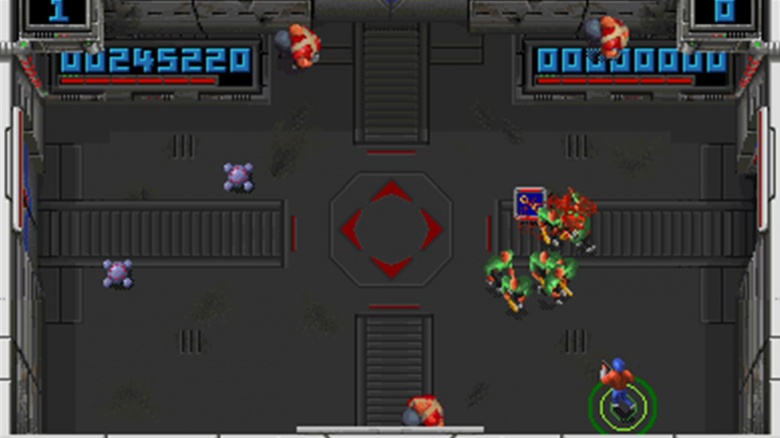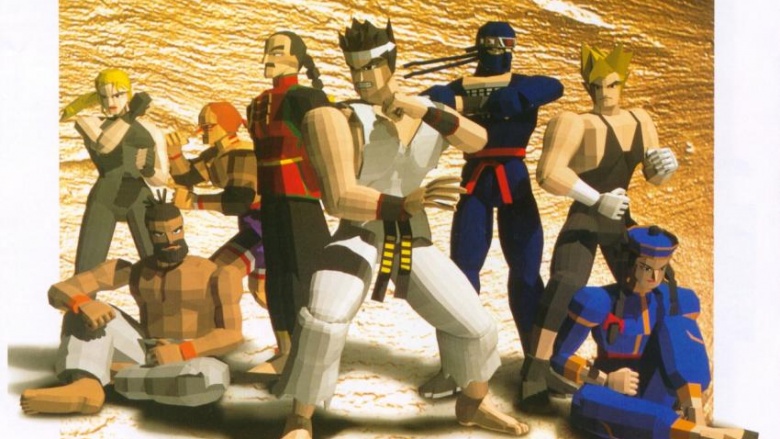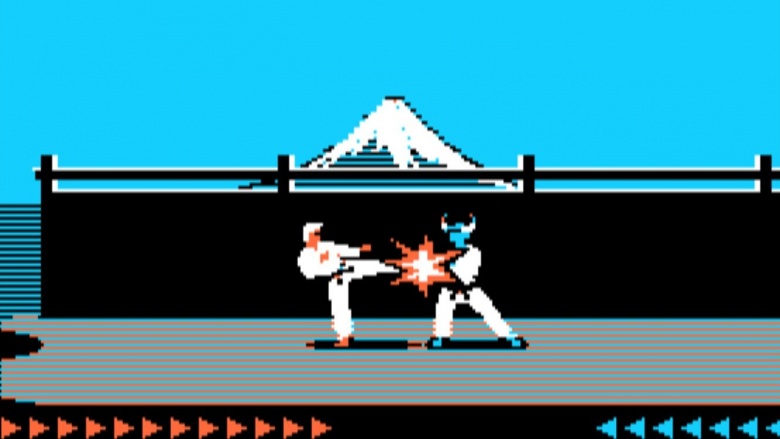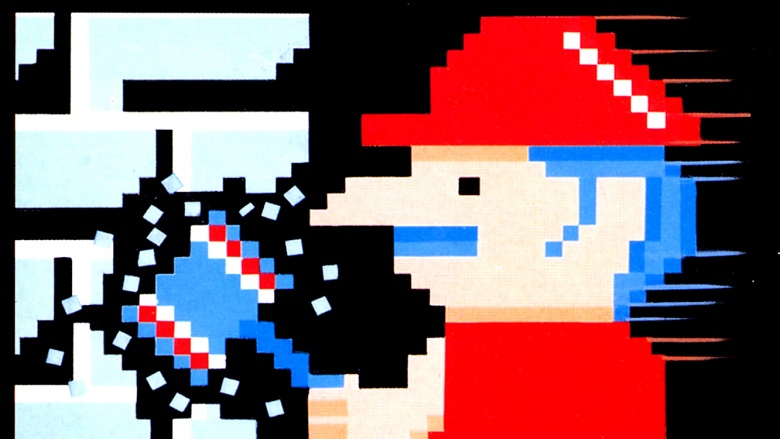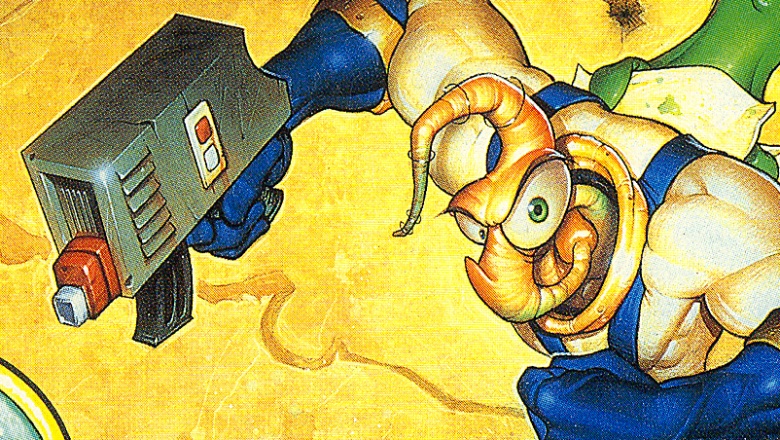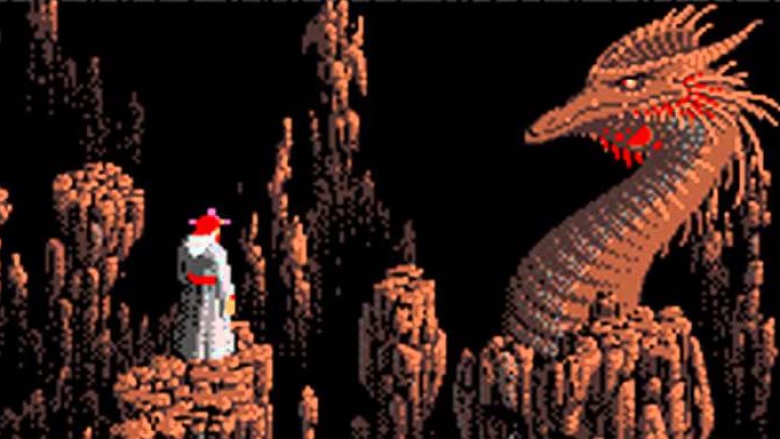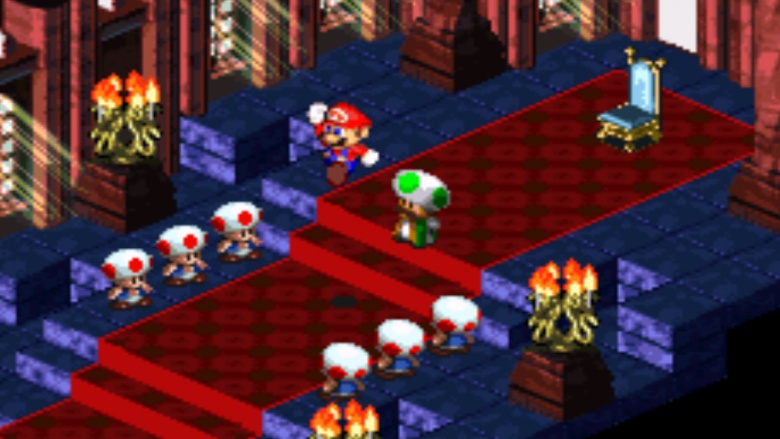Games That Were Ahead Of Their Time
The history of video gaming is full of experiences that people just weren't ready for. Game creators and programmers are always striving towards the next innovation, but sometimes it takes a little while for those unexpected mechanics to really catch on and make an impact. Games can languish for years until geeks begin to acknowledge them as an essential seed to their new favorites, and cult favorites are formed. Here are some video games that were just a few years ahead of their time.
Smash TV (1990)
It's a given in modern gaming that you can aim your weapons independently of which direction your body is facing, but that was rarely the case for anything pre-PlayStation. Not only is Smash TV is the Idiocracy of video games, depicting a cynical and violent vision of a completely commercialized future, but it allows NES users to use two controllers at once; one to run, and one to gun, providing the most true-to-life mobility possible on a home console at the time. Next time you strafe in Call of Duty, thank this moldy oldie.
Virtua Fighter (1993)
It's hard to imagine that only two years after the release of Street Fighter II, we'd see a completely 3D fighting game, but 1993's Virtua Fighter literally channeled aerospace technology to turn polygons into brawlers for arcade gamers. As the first truly 3D fighting game, the graphics may seem pretty primitive by today's standards. But the original VF opened the doorway for everything that came after it. Five years after release, the Smithsonian inducted Virtua Fighter into the National Museum of American History as a genuine work of important art. You can't say that about Splatterhouse.
Karateka (1984)
Five years before Jordan Mechner revolutionized gaming with the original Prince of Persia, he released Karateka for the good ol' Apple II. In Karateka, the unnamed hero's animations are fully rotoscoped, which means that your karate dude's fighting moves are traced from actual film of karate techniques, making them surprisingly smooth and realistic for the era. This technique would later be used for other games, like Out of This World and Shaq Fu. Also notably, Karateka features multiple endings; if you approach the final princess in a fighting stance, she'll instantly kick you to death, instead of embrace you in victory. Just like real life.
Wrecking Crew (1985)
Super Mario Maker has nothing on Wrecking Crew, one of the original Nintendo games in which you could make and save your own levels. One of the more obscure Mario titles, Wrecking Crew has Mario or Luigi strategically destroying walls throughout a vertically-oriented building—while a dude named Spike alternately helps or hinders your progress—in a kind of action/puzzle hybrid. Best of all, however, was the player's ability to create their own levels to challenge themselves and friends, play with game elements, and ultimately become amateur level designers. Wrecking Crew never really caught on, but level-making has never been hotter.
Earthworm Jim 2 (1995)
Earthworm Jim 2 isn't so much a video game as it is a collection of bizarre, unthemed mini-games. While many portions of Earthworm Jim 2 consist of twisty run-n-gun stuff, other levels delve into the truly surreal: swimming through intestines filled with pinball parts as a cave lizard, bumping a balloon bomb through isometric obstacles, a nonsensical trivia contest, and using a giant marshmallow to prevent puppies from exploding on the ground. Every level requires a new set of skills, which is something we wouldn't see again in earnest until Mario Party and the WarioWare series.
The Immortal (1990)
The incredibly ambitious The Immortal was originally going to be an online RPG for multiple players, but was limited by the technology of 1990, and the fact that AOL didn't even exist yet. But even what was left of the game after cutting online features is pretty impressive. Players guide a wizard through a complex isometric dungeon, and the ability to befriend hostile species can alter the course of the game. Real-time swordfighting and a twist ending are all elements that would be incorporated into far more complex games later on, and there's also no doubt that Mortal Kombat took a few notes from The Immortal when designing their gorier fatalities.
World Class Track Meet (1988)
Kids being lazy sacks of wet sugar isn't a problem unique to the 2000s. Back in the '80s, the concern about childhood obesity was just as real, and motion gaming took its first weird steps towards its later legitimacy. World Class Track Meet came with the Nintendo Power Pad, a large sheet of plastic with electronic sensors that would respond to the pressure of your feet (or hands, if you were a cheater). So while the device was limited to games that involved running and jumping, it got competitive kids off of the couch for a bit, which we really wouldn't see again until the Wii, Kinect, the PlayStation Move, or to a lesser degree, home versions of Dance Dance Revolution.
Super Mario RPG (1996)
Super Mario RPG lived in the shadow of Super Mario 64, which was also released in 1996 and absolutely blew everyone's minds with a full-on, 3D, explorable world. While kids were ready for a whole new world of platforming, they temporarily lost interest in traditional turn-based RPGs, which incorporated plenty of strategy, but very little action. Super Mario RPG, on the other hand, incorporated the need to hit specific buttons at specific times, much like an early version of modern quick time events, involving the player more actively than the usual sluggish pace of other RPGs. Timing actions would become a pretty important part of later RPGs, even if Super Mario RPG didn't get all of the attention it deserved.

